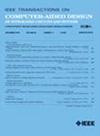Automated Generation of Benchmarks for Falsification of STL Specifications
IF 2.9
3区 计算机科学
Q2 COMPUTER SCIENCE, HARDWARE & ARCHITECTURE
IEEE Transactions on Computer-Aided Design of Integrated Circuits and Systems
Pub Date : 2025-03-11
DOI:10.1109/TCAD.2025.3550410
引用次数: 0
Abstract
Falsification, whose aim is to detect unsafe behaviors of cyber-physical systems (CPS) that violate signal temporal logic (STL) specifications, has been actively investigated in the past decade. Although numerous falsification approaches have been proposed, the falsification community suffers from a shortage of benchmarks that hinders a thorough assessment of those falsification approaches. In this article, we bridge this gap by proposing an automated approach for generating falsification benchmarks. Our approach is data-driven: first, we generate different time-variant traces (acting as system output traces) that satisfy a given STL specification, and we associate these with corresponding system input traces; then, we use these input and output traces to train an LSTM model that generalizes them. These models can serve as benchmarks for assessing falsification approaches against the given specification. In the experimental evaluation, we validate the generated models by measuring their ability to differentiate the performance of different falsification approaches. Our generated models expose strengths and weaknesses of all the considered falsification approaches, which was not achieved by benchmarks currently used in the falsification community. These results demonstrate the usefulness of our approach and can potentially push forward subsequent research in falsification.STL规范伪造基准的自动生成
伪造的目的是检测违反信号时间逻辑(STL)规范的网络物理系统(CPS)的不安全行为,在过去十年中得到了积极的研究。虽然提出了许多证伪方法,但证伪界缺乏基准,这妨碍了对这些证伪方法的彻底评估。在本文中,我们通过提出一种生成伪造基准的自动化方法来弥合这一差距。我们的方法是数据驱动的:首先,我们生成不同的时变轨迹(作为系统输出轨迹),满足给定的STL规范,我们将这些与相应的系统输入轨迹相关联;然后,我们使用这些输入和输出轨迹来训练一个一般化它们的LSTM模型。这些模型可以作为根据给定规范评估伪造方法的基准。在实验评估中,我们通过测量其区分不同证伪方法性能的能力来验证生成的模型。我们生成的模型揭示了所有被考虑的证伪方法的优点和缺点,这是目前在证伪社区中使用的基准所没有达到的。这些结果证明了我们的方法的有效性,并有可能推动后续的伪造研究。
本文章由计算机程序翻译,如有差异,请以英文原文为准。
求助全文
约1分钟内获得全文
求助全文
来源期刊
CiteScore
5.60
自引率
13.80%
发文量
500
审稿时长
7 months
期刊介绍:
The purpose of this Transactions is to publish papers of interest to individuals in the area of computer-aided design of integrated circuits and systems composed of analog, digital, mixed-signal, optical, or microwave components. The aids include methods, models, algorithms, and man-machine interfaces for system-level, physical and logical design including: planning, synthesis, partitioning, modeling, simulation, layout, verification, testing, hardware-software co-design and documentation of integrated circuit and system designs of all complexities. Design tools and techniques for evaluating and designing integrated circuits and systems for metrics such as performance, power, reliability, testability, and security are a focus.

 求助内容:
求助内容: 应助结果提醒方式:
应助结果提醒方式:


